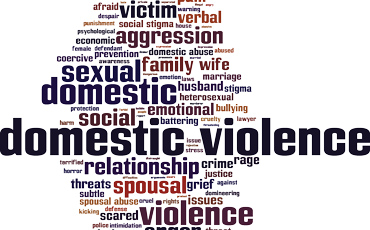The objective of this article is to acquaint readers with the relationship between violence and addiction.
By: Susan Adams, M. Ed.
The Relationship Between Violence and Addiction
Summary: It would seem to be self-evident that the consuming of substances lowers boundaries between people and therefore increases violence. With the consumption of alcohol, people are more likely to lose reason and then control and to act out negative emotion. The emotion that comes out after drinking is drugged emotion. This article presents a discussion of violence, substance abuse, and their interrelationship.
The emotion that comes out after drinking is drugged emotion. This article presents a discussion of violence, substance abuse, and their interrelationship.
Violence can be physical and sexual. It occurs between strangers, intimate partners, family members, and friends. It is of interest to note that a prior history of being victimized may predispose some people to drug and alcohol problems. And, drug and alcohol problems may predispose some people to continued victimization. This is related to the use of alcohol and drugs for coping in place of learning more effective means to get one's needs met.
There is an enlarging body of research that points to the idea that women who are addicted to alcohol and drugs have experienced higher rates of violence than any other women. It is estimated that 90% of all women with drug abuse problems have been sexually abused at least one time in their lifetime.
Women, in general, appear more vulnerable to violence in the family and within intimate relationships while men seem to be more predisposed to violence in non-intimate situations. Research in psychiatric hospitals on types of violence experienced by adolescents found that the most common traumatic experience for boys was physical assault by peers, while girls most often reported being victimized by forced sex acts.
People who have experienced repeated violence or who have been targeted by a combination of physical and sexual violence appear to be at higher risk for substance abuse compared to others. These same people seem to suffer more severe addiction and mental health problems. In a national study of addiction treatment programs, female patients who had been repeatedly sexually and physically abused were much more likely than other patients to have been in addiction and mental health treatment prior to the current episode and to have health problems such as HIV/AIDS.
Sexual violence often begins as sexual abuse or incest in childhood. Female alcoholics and addicts are also vulnerable to violence in adulthood. Female alcoholics have been found to be more vulnerable to the abuse of their alcoholic husbands and partners than women who do not drink. However, the cause and effects of alcohol and violence are difficult to sort out.
It might be hypothesized, that after women drink heavily they are more vulnerable to violence by their partners or that women drink after they are beaten as a way of coping with the violence--or each in different cases.
Domestic violence is strongly related to underlying issues of power and control in relationships. Violence in the family is not directly linked to drug or alcohol abuse, and therefore, does not disappear with addiction treatment. In fact, in issues of violence in domestic cases, the perpetrator often needs treatment to deal with anger management, rather than substance abuse. Either or both are possible. If both are present, the substance abuse must be dealt with first before any anger management would be effective.
Crime victims are also vulnerable to alcoholism. Research shows us that criminal victimization usually precedes an increase in alcohol use by crime victims. A major study on adult women in the United States found that there was a direct relationship between the number of times a woman was victimized and the likelihood that she would become alcoholic. In addition, women who abuses drugs or alcohol have a greater risk of repeated assaults than do other women. In short, alcohol and drugs increase the likelihood of violence and histories of violence are often coped with by the overuse of substances.
